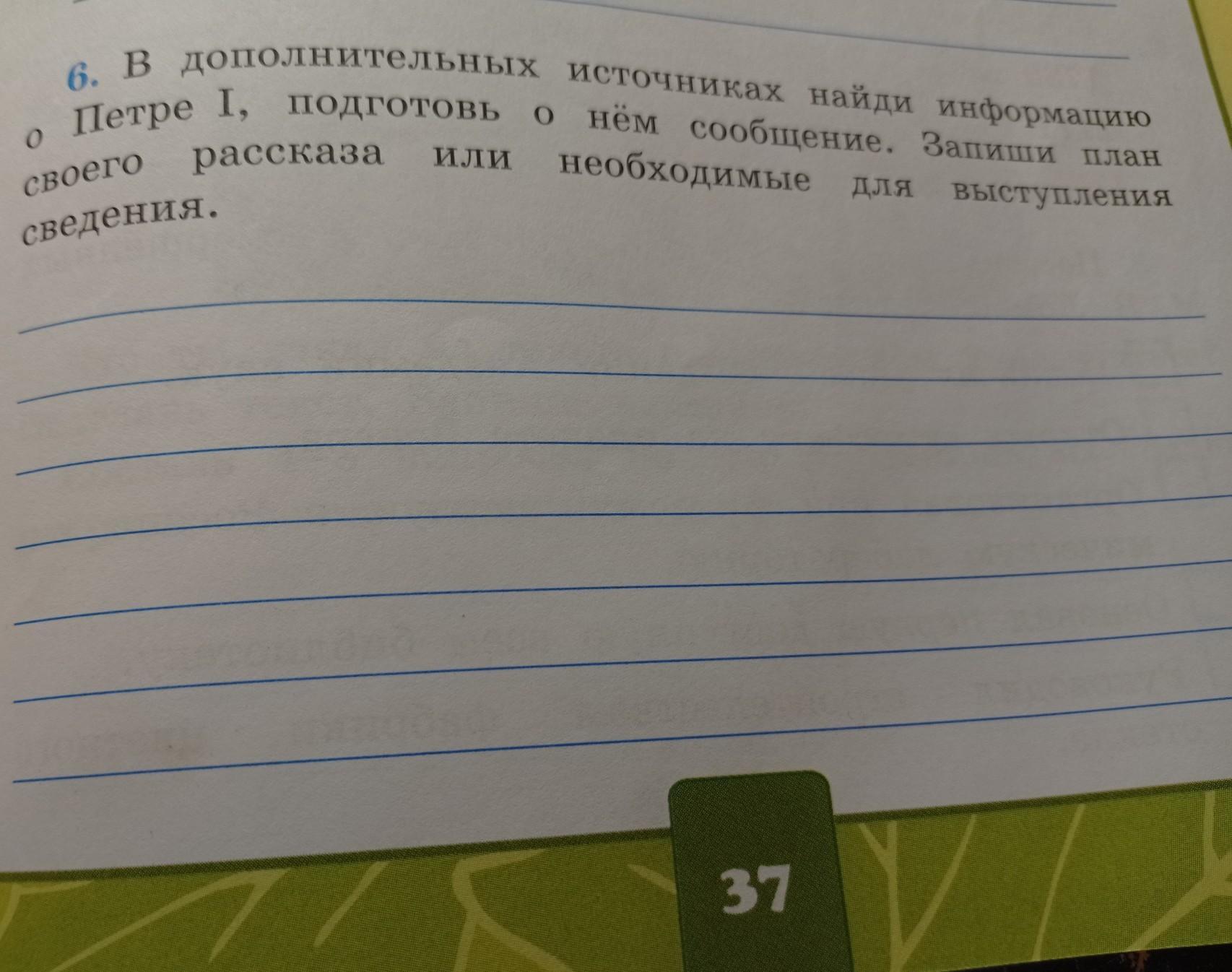Предмет: Окружающий мир,
автор: mihatop33
краткий рассказ о петре 1 с фактоми которых нет в учебнике
СРОЧНО ПОМОГИТЕ ПОЖАЛУЙСТА!!!!!!!!!!!!!!
Приложения:

mihatop33:
спасибо
Великий царь Пётр 1. Стал первым императором России. очень умный человек. С детсва увлекался кораблестроением. Мог изготовить часы, сделать бумагу, также он брал уроки рисования. Интеренсо что Пётр Великий оечнь любил ферверки. По его приказу начало нового века отмпчалось фейрверками длительность которыз продолжалась целую нелелю! рост Петра был 200 см, при этом размер его ноги был всего лишь 38-го размера. что достаточно мало для мужчины.
Сотри. Рост Петра первого был более 2-х метров
так бкдет лучше
ещё раз большое спасибо:)
понял
по желанию можешь добаивть не много мвоих слов
блин т9 бесит
надеюсь помогла
да очень сильно
Ответы
Автор ответа:
2
Факты:
1) Пётр первый обучил солдат отличать левую сторону от правой, привязывая к одной их ноге сено, а к другой — солому. Это сейчас подобная хитрость звучит, возможно, смешно, а тогда, в эпоху тотальной неграмотности простолюдинов, это было неплохим достижением.
2)Пётр I был первым российским императором
3)Царём юный Пётр был провозглашён в возрасте десяти лет. Самостоятельно управлять страной он начал в семнадцать лет.
Краткий рассказ о Пётре первом:
Петр Алексеевич родился 9 июня 1672 г. Его отцом был русский царь Алексей Михайлович Романов, а матерью Наталья Нарышкина — вторая жена царя. В возрасте 4 лет Петр потерял отца, который умер в 47 лет. Воспитанием царевича занимался Никита Зотов, который по меркам тогдашней России был очень образованным. Петр был младшим в большой семье Алексея Михайловича (13 детей). В 1682 году после смерти царя Федора Алексеевича при дворе обострилась борьба двух боярских кланов — Милославских (родственники первой жены Алексея Михайловича) и Нарышкиных. Первые считали, что престол должен занять больной царевич Иван. Нарышкины, как и патриарх, выступали за кандидатуру здорового и довольно подвижного 10-летнего Петра. В результате стрелецких волнений был выбран нулевой вариант: царями становились оба царевича, а регентом при них назначалась их старшая сестра — Софья.
1) Пётр первый обучил солдат отличать левую сторону от правой, привязывая к одной их ноге сено, а к другой — солому. Это сейчас подобная хитрость звучит, возможно, смешно, а тогда, в эпоху тотальной неграмотности простолюдинов, это было неплохим достижением.
2)Пётр I был первым российским императором
3)Царём юный Пётр был провозглашён в возрасте десяти лет. Самостоятельно управлять страной он начал в семнадцать лет.
Краткий рассказ о Пётре первом:
Петр Алексеевич родился 9 июня 1672 г. Его отцом был русский царь Алексей Михайлович Романов, а матерью Наталья Нарышкина — вторая жена царя. В возрасте 4 лет Петр потерял отца, который умер в 47 лет. Воспитанием царевича занимался Никита Зотов, который по меркам тогдашней России был очень образованным. Петр был младшим в большой семье Алексея Михайловича (13 детей). В 1682 году после смерти царя Федора Алексеевича при дворе обострилась борьба двух боярских кланов — Милославских (родственники первой жены Алексея Михайловича) и Нарышкиных. Первые считали, что престол должен занять больной царевич Иван. Нарышкины, как и патриарх, выступали за кандидатуру здорового и довольно подвижного 10-летнего Петра. В результате стрелецких волнений был выбран нулевой вариант: царями становились оба царевича, а регентом при них назначалась их старшая сестра — Софья.
спасибо спасибо спасибо спасибо спасибо спасибо спасибо спасибо спасибо спасибо спасибо спасибо спасибо спасибо спасибо спасибо спасибо спасибо
Похожие вопросы
Предмет: Қазақ тiлi,
автор: уравнение5
Предмет: Русский язык,
автор: ichikvani
Предмет: Английский язык,
автор: belka9324
Предмет: Обществознание,
автор: nikolajalekseev646